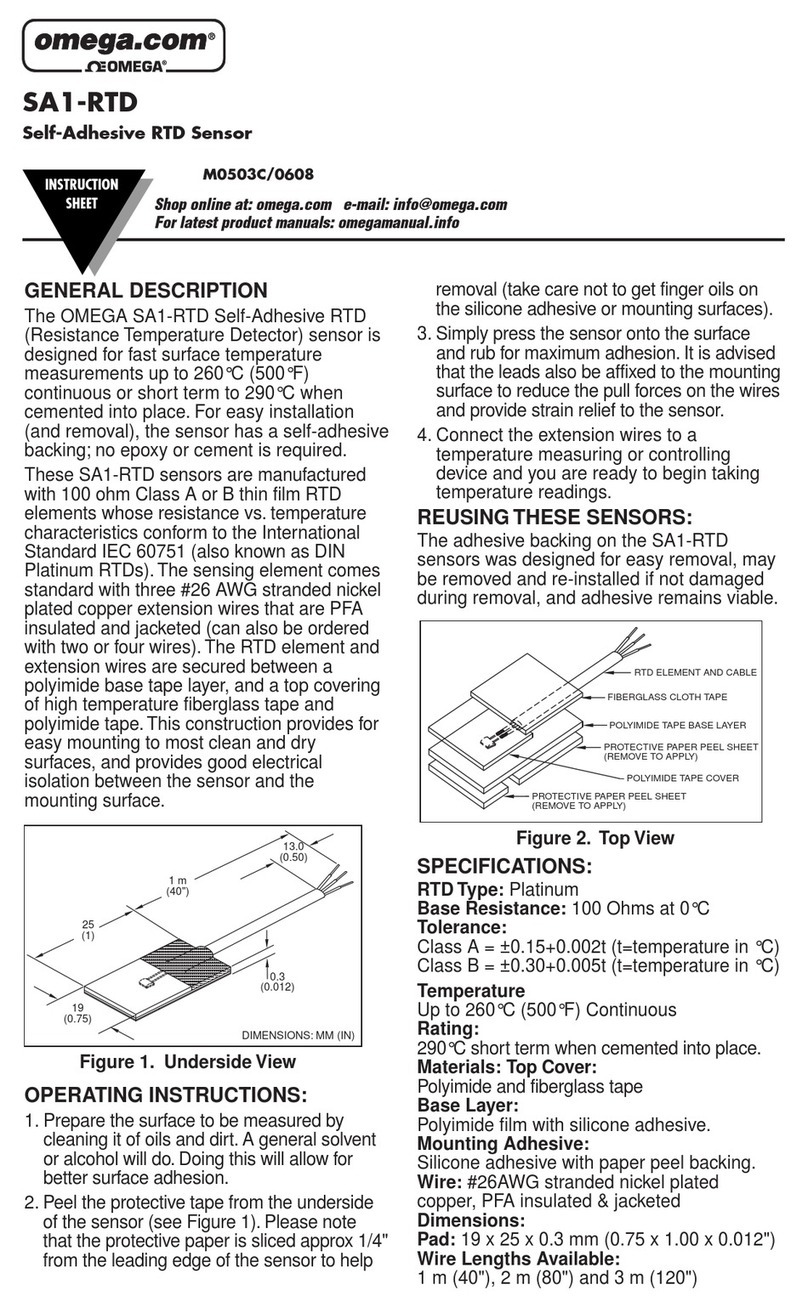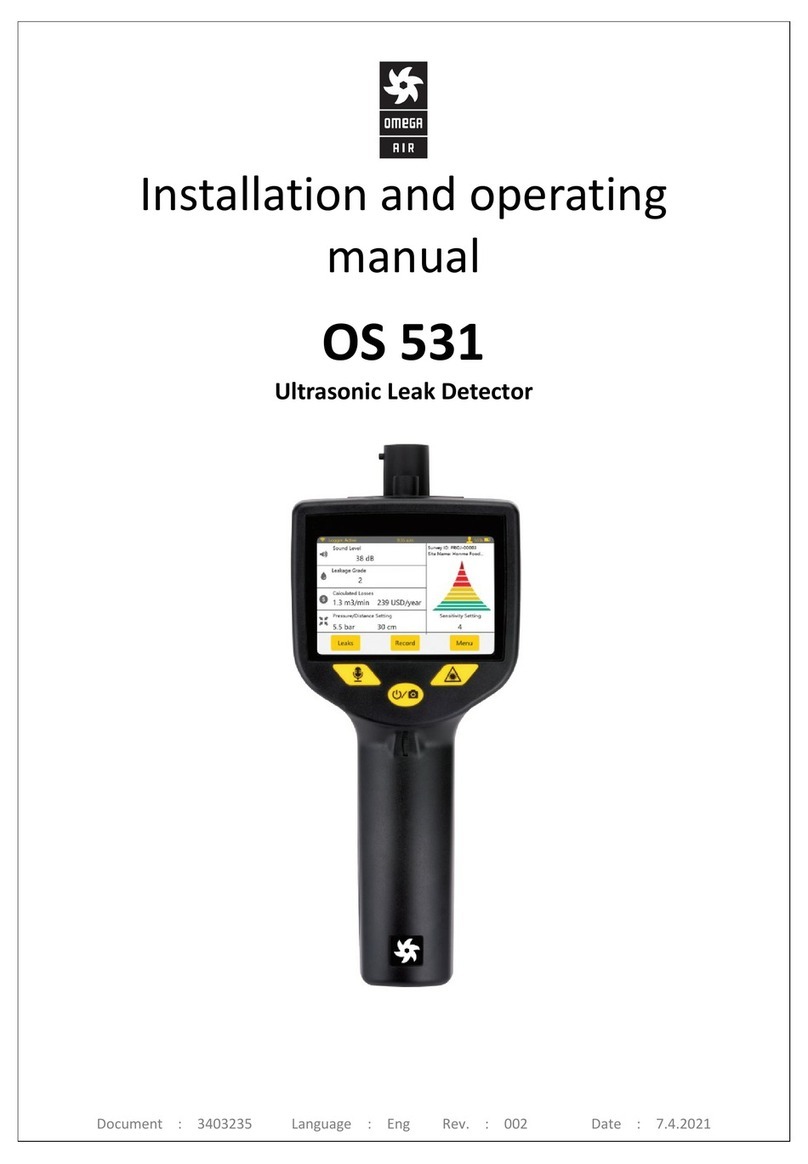10
®
Calibration
1. Turn both potentiometers (P1 and P2) fully
counterclockwise before you begin (Fig. 1).
2. Install the probe and power it on. The L1 green
LED should be on.
3. With the vessel empty (or the medium not in
contact with the sensor), turn the sensibility
potentiometer (P1) clockwise until the yellow
LED (L3) turns On. Mark that location on the
electronics' label using a pencil. If this LED (L3)
does not turn on, mark the maximum position on
the label with a pencil (Fig. 2).
4. Fill the vessel until the medium is in contact
with the sensor.
5. Turn the potentiometer (P1) counter-clockwise
until the yellow LED (L1) turns Off. Mark the
location where the yellow LED shuts off on the
electronics' sticker using a pen or pencil. If the
LED does not turn Off, leave the potentiometer
completely turned counter-clockwise (Fig. 3).
6. Now that you have marked minimum and
maximum settings for your particular application,
turn the sensibility potentiometer (P1) clockwise
half way between the two pencil marks. This point
should be the ideal setting where the probe is
neither too sensitive or not sensitive enough.
This method of calibration should also prevent
false alarms.
5
5
5
5
0
0
0
0
1
1
1
1
2
2
2
2
3
3
3
3
4
4
4
4
6
6
6
6
7
7
7
7
8
8
8
8
9
9
9
9
10
10
10
10
Sensitivity
Sensitivity
Sensitivity
Sensitivity
10
10
10
10
1
1
1
1
20 sec.
20 sec.
20 sec.
20 sec.
LVCN
LVCN
LVCN
LVCN
Delay
Delay
Delay
Delay
L1
L1
L1
L1
L2
L2
L2
L2
L3
L3
L3
L3
P2
P2
P2
P2
P1
P1
P1
P1
Fig.1
Fig.2
Fig.3
Fig.4
Delay
Adjust the delay time from 0,1 to 20 seconds
by setting potentiometer P2.
®
®
®
®





























